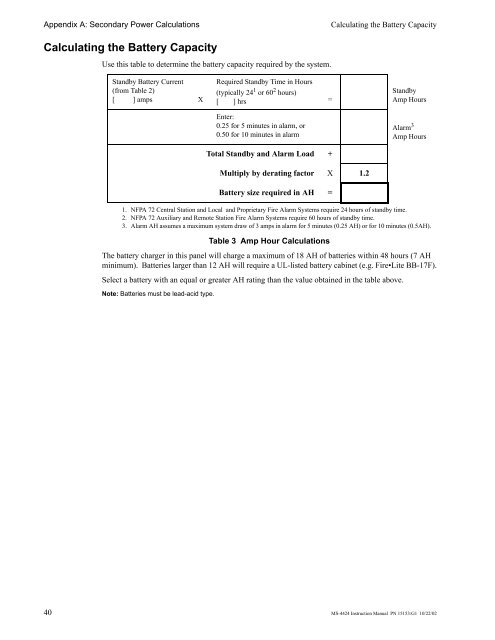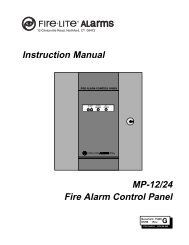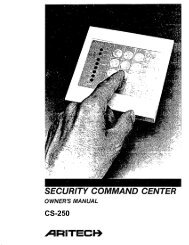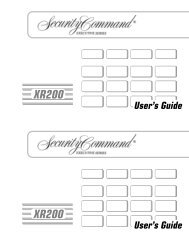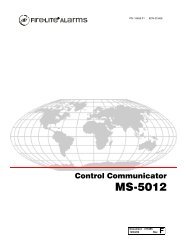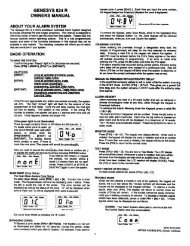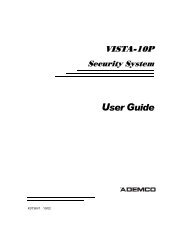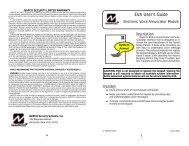MS-4424 Instruction Manual - Fire-Lite Alarms
MS-4424 Instruction Manual - Fire-Lite Alarms
MS-4424 Instruction Manual - Fire-Lite Alarms
You also want an ePaper? Increase the reach of your titles
YUMPU automatically turns print PDFs into web optimized ePapers that Google loves.
Appendix A: Secondary Power Calculations<br />
Calculating the Battery Capacity<br />
Calculating the Battery Capacity<br />
Use this table to determine the battery capacity required by the system.<br />
Standby Battery Current<br />
(from Table 2)<br />
[ ] amps X<br />
Required Standby Time in Hours<br />
(typically 24 1 or 60 2 hours)<br />
[ ] hrs<br />
=<br />
Standby<br />
Amp Hours<br />
Enter:<br />
0.25 for 5 minutes in alarm, or<br />
0.50 for 10 minutes in alarm<br />
Alarm 3<br />
Amp Hours<br />
1. NFPA 72 Central Station and Local and Proprietary <strong>Fire</strong> Alarm Systems require 24 hours of standby time.<br />
2. NFPA 72 Auxiliary and Remote Station <strong>Fire</strong> Alarm Systems require 60 hours of standby time.<br />
3. Alarm AH assumes a maximum system draw of 3 amps in alarm for 5 minutes (0.25 AH) or for 10 minutes (0.5AH).<br />
Table 3 Amp Hour Calculations<br />
The battery charger in this panel will charge a maximum of 18 AH of batteries within 48 hours (7 AH<br />
minimum). Batteries larger than 12 AH will require a UL-listed battery cabinet (e.g. <strong>Fire</strong>•<strong>Lite</strong> BB-17F).<br />
Select a battery with an equal or greater AH rating than the value obtained in the table above.<br />
Note: Batteries must be lead-acid type.<br />
Total Standby and Alarm Load +<br />
Multiply by derating factor X 1.2<br />
Battery size required in AH =<br />
40 <strong>MS</strong>-<strong>4424</strong> <strong>Instruction</strong> <strong>Manual</strong> PN 15153:G1 10/22/02


